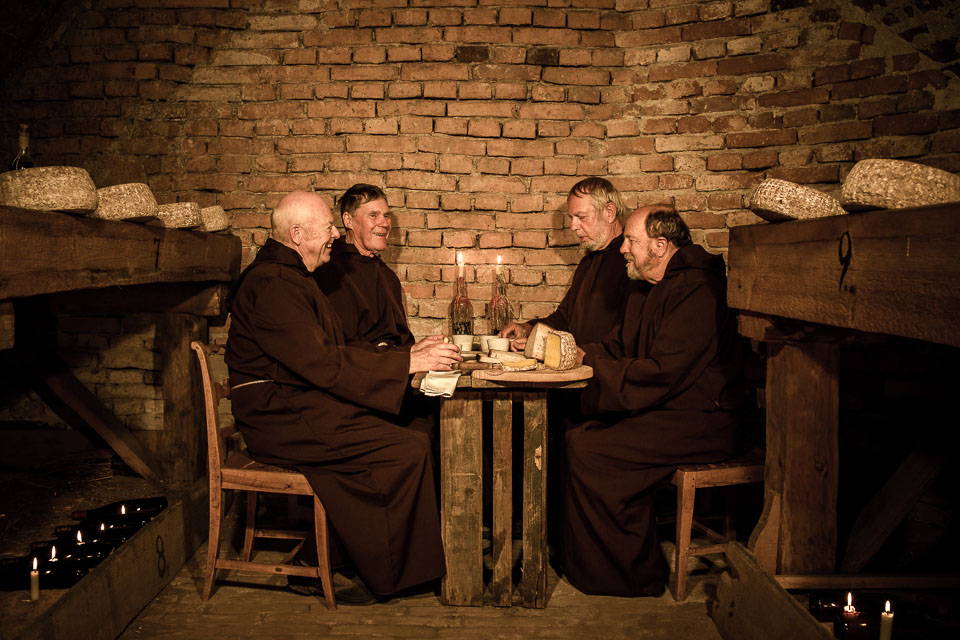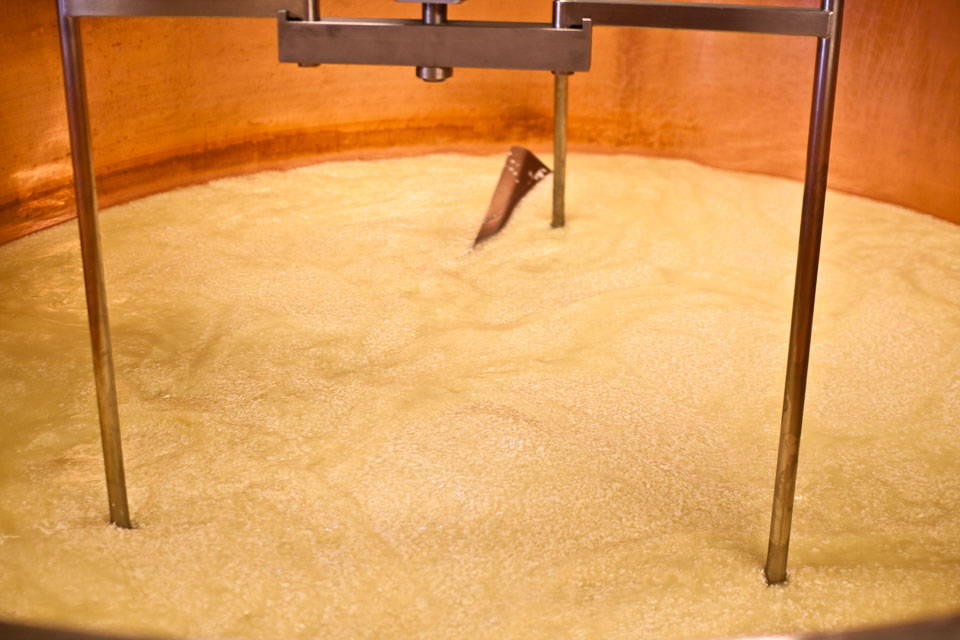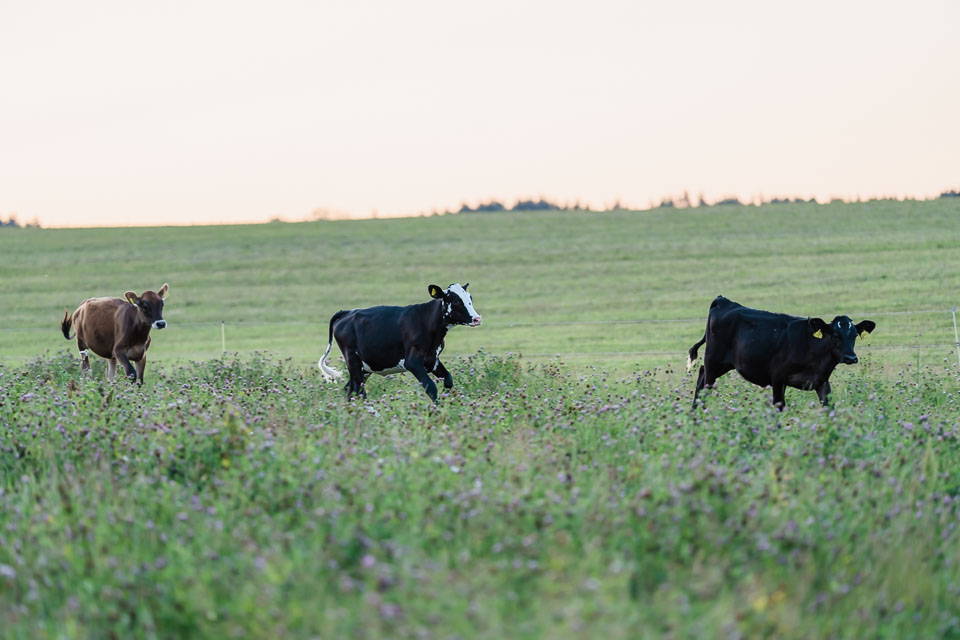We are on Trustpilot
We are rated Excellent, read what our customers are saying
If you want a piece of gourmet Swedish cheese that comes complete with a hefty dose of history, look no further than Almnäs. At this old manor house and accompanying fields and forests, cheese production is done the old fashioned way—the cheesery first opened its doors in 1830, but the cheesemaking tradition they use dates back to the Middle Ages.

We had the pleasure of interviewing Tommy Larsson, who is one of the staff running the “Lagret” where the cheese is matured and some of the logistics for the company. He told us about the cheesemaking process, the importance of good bacteria, and what makes a gourmet cheese a gourmet cheese.
The Death of Small Dairies

The Reinvention of Great Cheesemaking
The Difference Between Cheese and Cheese
“Industrial cheesemaking is all about effectiveness and scalability. You have to be able to create a lot of cheese fast and might use a different bacteria to add to the cheese to speed up the process. You want to keep as much of the liquid from the milk in the cheese as possible. When it comes to small, artisanal, dairies, it’s all about quality. You also don’t use preservatives, so you have to have a process that ensures the cheese preserves itself.”
For people with lactose intolerances, hard cheeses made the traditional way are perfect, because all the lactose is eaten by the friendly bacteria added to the cheese in the cheesemaking process. That’s how bad bacteria is kept at bay—there’s nothing left for it to eat.
Another difference is that big companies often use homogenized milk, meaning they have literally broken up the fats in the milk so that the milk gets an even texture (as opposed to a layer of fat on top). But that’s not good for making great cheese.
How to Make Cheese
It Takes Good Bacteria to Make Great Cheese
“We store our cheese in the old distillery from 1770. The planks the cheese is stored on come from the original cheesery and have active bacteria that’s at least 150 years old. We had them lab tested. This is the bacteria that forms the “shell” of the cheese and protects it. You can eat it if you wish, which adds a different flavor profile. Each cheese is flavored by the bacteria in your specific region.”
Almnäs has just built a new barn for storing and aging cheese, but this is making Tommy both excited and nervous.“Growing the right kind of bacterial culture takes time. With the new storage facility it’s exciting as it’s built to Swiss standards and will have a robot turning the cheese as it’s a time intensive work of labor and, frankly, we are getting too old and can’t find new staff who want to walk around just turning cheese. We will be able to make more cheese and it will be less labor intensive even though everything else we do is still by hand. We pack all the cheese ourselves. No machinery is used for that. That’s why we tend to sell big cheese blocks, not individually cut pieces, we just don’t have the manpower for it.”
The bacteria that’s used to create the hard shell for the cheeses creates either brown or white mold. “We don’t produce blue cheese because the green mold spreads very easily.”

Bad Bacteria
I asked if Tommy wasn’t scared of bad bacteria entering the process?
“If something’s wrong, you smell it or see it. Plus, people do the most of the resources they have. If they can’t afford contamination, they might pasteurize the milk they use. We don’t do that, but we heat the milk to about 50 degrees Celsius which prevents some bacteria. But also traditional cheesemaking allows for very little contamination as we give the good bacteria the time to eat the lactose. That means there’s nothing left for the bad bacteria.”
“The only bacteria you’re worried about is listeria and salmonella. You have to do stick tests and when you do, be honest. Listeria comes from the soil. You’ll find it in the cheese closest to the ground, so don’t test a batch close to the ceiling. And you make blue cheese by pricking the cheese so that the bacteria gets inside, but if you get the wrong bacteria inside, you’ll contaminate all the cheeses that were pricked at the same time.”
It’s All About the Cows
The cows at Almnäs are well kept—all 225 or so of them (which produce about 80 tonnes of cheese yearly!!).
“When a cow is calving she’s put in a special stall that’s as big as a condo. That’s where the calf, or calves, spend the first period of their lives. Then the calves are taken to their own stall, before being released into the fields with their mothers. The problem is, the calves tend to enjoy being indoors and at the least sign of rain, or if it’s too sunny, they don’t want to go outside! There’s a lot of care going into the calves so that they don’t get sick.” Right now, Almnäs is also replacing their Holstein cows with Brown Swiss cows, but this is a work that takes five generations or so.
“We don’t buy new calves for this, we got Brown Swiss bulls that impregnate the cows. But it takes about five generations to get a cow that’s considered Brown Swiss.”The reason for the changeover?“ Brown Swiss produce less milk, but it’s milk that’s better for cheese production, as it has a better ratio of fat and protein. The protein, casein, is also better for making cheese. The type of casein found in the milk from the Brown Swiss cows can better handle the cheesemaking process.”

What You Feed a Cow Is What Ends Up in the Cheese
When It Rains, It Pour
Did you know that two weeks of rain might delay the production of your favorite cheese?
“In summer when the cows are roaming outside it’s an issue if it starts raining a lot as the grass they eat isn’t as good quality and they end up dirty. That dirt can’t get into the milk. As a result, if it rains a lot, we often have to wait a week or two before getting the milk we need for the cheese.”
The State of the Swedish Cheese Industry
A World-Class Cheesery and the Distinctions to Prove It
Fun facts Almnäs Gård
Our Gourmet Cheese Collection